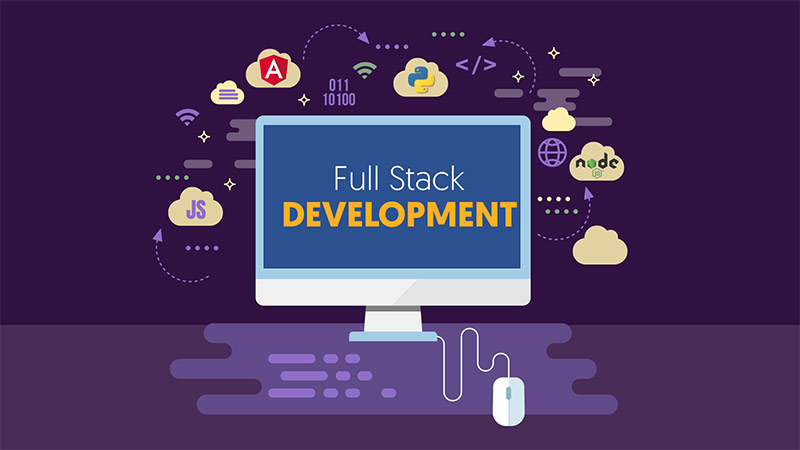Full-stack development combines both front-end and back-end development skills, allowing developers to build entire web applications from start to finish. This versatility makes full-stack developers highly sought after in the tech industry. This article delves into the role of full-stack developers, the technologies they use, and the benefits and challenges of this multifaceted role.
What is Full-Stack Development?
Full-stack development encompasses all aspects of web development, from the user interface that clients interact with to the server-side logic that processes requests and manages data. A full-stack developer possesses expertise in both front-end and back-end technologies, allowing them to create a seamless integration between the two.
Key Technologies Used by Full-Stack Developers
Front-End Technologies: Full-stack developers need a solid understanding of front-end languages and frameworks, including:
- HTML: For structuring content and creating web pages.
- CSS: For styling and layout, using frameworks like Bootstrap for responsive design.
- JavaScript: For adding interactivity, often employing libraries like React, Vue.js, or Angular.
Back-End Technologies: Proficiency in back-end languages and frameworks is essential, such as:
- Node.js: A JavaScript runtime that allows developers to use JavaScript for server-side development.
- Ruby on Rails: A framework that emphasizes convention over configuration, making it easier to build applications quickly.
- Django: A Python framework that provides robust tools for web development and rapid application building.
Databases: Full-stack developers should be familiar with both SQL and NoSQL databases, such as:
- MySQL/PostgreSQL: Relational databases that use structured query language (SQL) for data management.
- MongoDB: A NoSQL database that stores data in flexible, JSON-like documents.
Version Control: Proficiency with Git allows developers to manage code changes, collaborate with others, and maintain version history.
APIs: Understanding how to create and consume APIs is crucial for enabling communication between front-end and back-end systems.
Benefits of Being a Full-Stack Developer
- Versatility: Full-stack developers can work on both front-end and back-end tasks, making them valuable assets to teams and organizations. This versatility allows for greater project flexibility.
- Better Collaboration: Understanding both sides of development enables full-stack developers to communicate more effectively with designers and back-end developers, facilitating smoother project workflows.
- Increased Job Opportunities: The demand for full-stack developers is growing as companies seek professionals who can manage various aspects of development without needing separate specialists.
- Holistic Understanding of Projects: Full-stack developers have a comprehensive view of the development process, allowing them to make informed decisions that benefit the entire application.
Challenges Faced by Full-Stack Developers
- Keeping Up with Technology: The technology landscape is constantly evolving. Full-stack developers must continuously learn new languages, frameworks, and best practices to stay relevant.
- Depth vs. Breadth: While being a full-stack developer offers versatility, it can be challenging to maintain deep expertise in both front-end and back-end technologies. Developers may need to prioritize one area over the other depending on project requirements.
- Workload Management: Handling both front-end and back-end tasks can lead to increased workloads. Full-stack developers must manage their time effectively to avoid burnout.
- Complex Problem Solving: Full-stack developers often face complex challenges that require a deep understanding of multiple technologies and how they interact. This can lead to time-consuming debugging and troubleshooting.
The Role of Full-Stack Developers
Full-stack developers are integral to many development teams, often serving as project leads or key contributors. They are responsible for designing the overall architecture of web applications, implementing features across the stack, and ensuring that the application is user-friendly and efficient. Their broad skill set enables them to take projects from concept to completion.
Conclusion
Full-stack development represents a dynamic and versatile role within the web development landscape. By mastering both front-end and back-end technologies, full-stack developers play a crucial role in creating cohesive and functional web applications. As the demand for skilled developers continues to rise, the importance of full-stack development will remain at the forefront of the tech industry.



